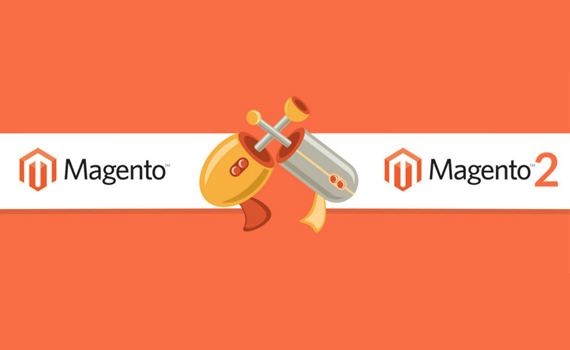

Why is it Worth Upgrading from Magento 1 to Magento 2?
This entry was posted on Friday June 7, 2019Scope planning (determining what elements of your store will transfer to Magento 2)
How do you estimate the scope of work and bring the Magento migration to actually end on the planned date? And if you are a business owner, how do you prepare yourself for this challenge?
This article will shed a light on how to stay sane in a hard time of upgrading, migrating and introducing major changes. The main focus, of course, is on the star of the show, Magento 2.
Why is it worth to upgrade to Magento 2?
But first, why is everyone so obsessed with Magento 2? Is this all just because of the fancy backend design and marketing promises? Here are the arguments for those who believe Magento 1 works just fine and there is no room for improvement. Numbers, new features and facts about real benefits to the business are just a few of the factors to consider.
Magento 1 will be gone soon
Official support for all Magento 1 versions will subside by June 2020. Magento has pushed back this date many times but they mean it this time. Magento 1 will be ‘over’ for both community and enterprise editions and without official support and security guarantee the Magento 1 websites will have their PCI compliance withdrawn. Therefore, no business will stay sustainable using Magento 1.
Better customer experience combined with faster performance
Customers expect a website to load within ten seconds. Any time above that mark is not sustainable for online retailers. Research shows that 34% of customers will not wait for that long.
Magento 2 has an updated Admin Panel that makes it easier and faster to manage the products and orders. There is Varnish page caching already integrated for better performance right out-of-the-box.
The requirements and conversion rates differ for every store. The order and product management and the checkout are different in Magento 2: the databases for each of them can be tuned to a specific load level.
Higher conversion rates and growing sales
Magento 2 stores are easier to buy from on every device or any screen resolution. The features worth upgrading are:Previews for all site changes made in the Admin Panel.
Better search results, granted by Elasticsearch.
Responsive design to cater to the needs of mobile users.
An improvement of product merchandising that allows building in YouTube and Vimeo videos.
Paypal already integrated into shorter and faster checkout.
More accessible PCI compliance.
Improved UI and UX for the business users
64% of customers will not come back to an online store if they were unsatisfied with the experience. Store managers have more freedom in Magento 2 and can save time on administrative processes that took longer time earlier. When the store is properly configured and every issue is taken care of, it is depicted clearly to customers. Improvements include:
Much easier Admin interface for the new employees to learn.
Drag and Drop functionality for orders, customers, and products.
A new and intuitive way of editing and creating products.
Importing and exporting of products for cross-selling and up-sell opportunities.
More efficient and flexible customization for developers
Magento 2 makes the work of the developers more flexible and opens up new opportunities for customization.
New campaigns, market strategies, and product lines.
Improved layout framework and theming.
Faster QA operations due to automated testing.
The upgrading process is easier to make new functionality available.
Compare store conversion and implementation to a desired Magento 2.x version
It may seem that you remember everything about the store you are working with, but when it comes to the estimations or real-time frames for the migration or an upgrade, it is easy to miss details that influence the final result. It is vital to inform the team of developers that will work on migration on every feature the owner wants to have in the upgraded store.
After the approximate picture is clear, it is time to do three more steps towards a painless migration.
Choose a new Magento 2 design template. Even if the old template works great and seems to be the best option, let it go. The themes for Magento 1 are not compatible with Magento 2. You will lose a lot of time on trying to copy it for the new version, while Magento 2 themes are responsive, out-of-the-box and perform well with built-in SEO tools.
Spend some time on investigating extensions that are installed now. If there are no Magento 2 versions of what is used, you can find an alternative or explore other possible features on Magento Marketplace and its alternatives. Most extension developers are already investing their efforts into Magento 2 development, so there are more options not only to upgrade what you have but to purchase new functionality. For example, you can find some must-have modules for sales motivations and better store administration at NEKLO Store.
Consider the timing according to the business schedule of the store (for example, planning an update on a holiday season is irrational) and notify the parties that can be affected by the store temporarily working: customers, partners, suppliers, etc.
Consult a professional before performing ANY technical changes. If you are not a Magento developer yourself, get yourself one to review your migration plan. There is no need to put a whole business to the risk because of a small mistake. You can always request a consultation, help with your planning and performing migration as many Magento development agencies offer a migration service.